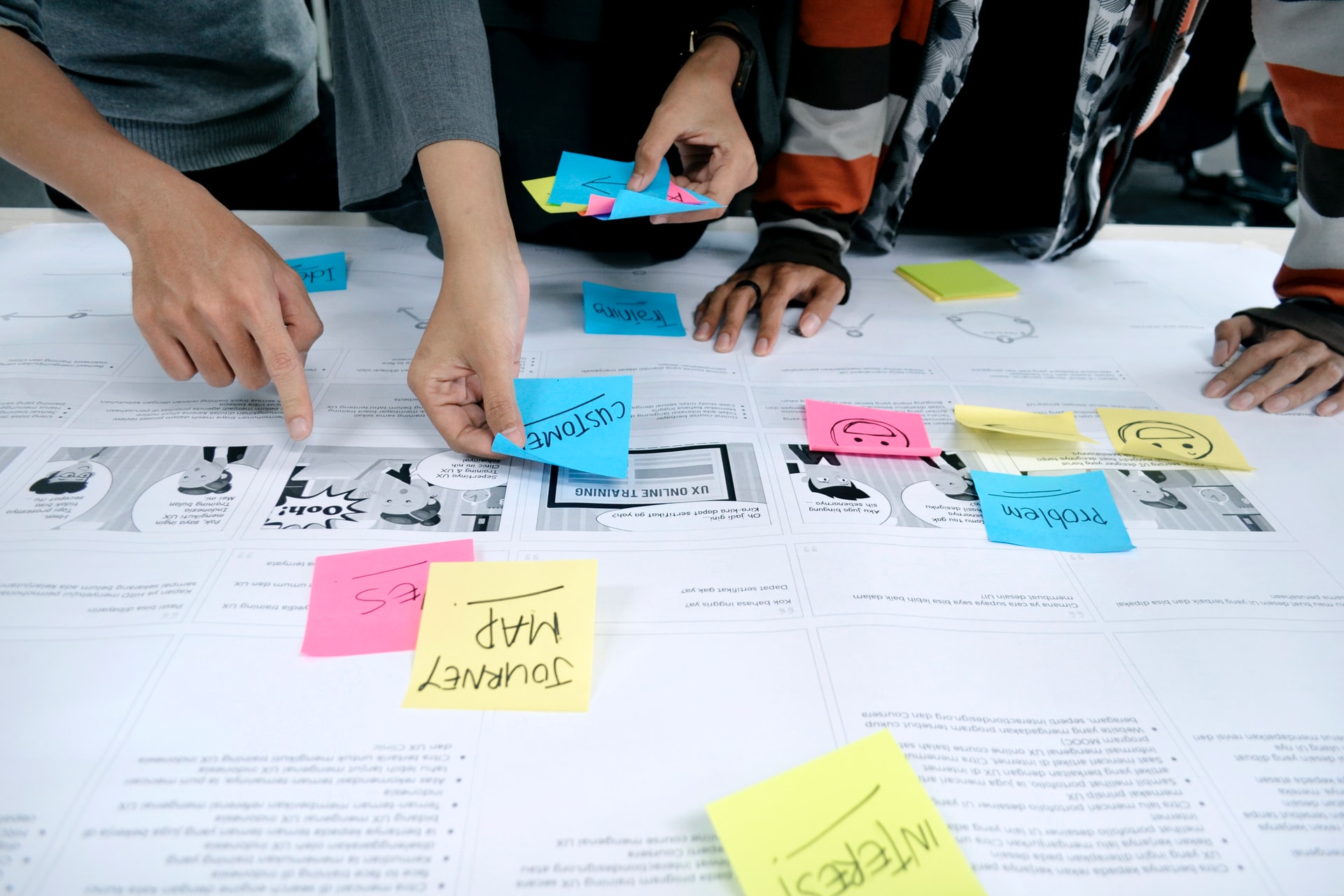 Blog
Blog
In one way or the other, every single human effort has the goal of fulfilling someone’s needs and expectations. Every day we all strive to get the best out of our time and knowledge; so, no matter what kind of industry we develop our activities, there’s always someone involved in that process: another human being.
Among the list of services we provide here at The Hustle, we dare to say we improve users’ experiences. But, what does “to create better experiences” mean? and why should your business might wish to follow a human-centric approach?
Day to day struggle
Pretty much every company starts its days facing the same question, “And now what?”. Either we are doing it fantastically and we just want to keep skimming on the stream; or our goals seem too far to reach and our actions fade away like ripple circles in the water. Day after day small, medium and large companies struggle to effectively develop a strategy and turn it in into concrete actions for next steps. I bet you’re thinking: “Well, I don’t spend 8 hours every day (or more, if you’re Elon Musk) just wondering what to do”. Ok, fair enough, but, let me raise a simple question: How can we be 100% sure our efforts have the impact we wish on our community?
Spoiler alert, you are not your final user or customer, or your employee, or your supplier, or God. And let’s face it, as far as I know, even God is being requested to improve his/her customer’s experience.
How does Elon Musk work 100 hours a week?
Human-Centric design starts with a very simple, yet powerful concept: empathy. But let me warn you, it is not the kind of empathy we’ve been taught so far, no sir. There is a brilliant TED talk by Tiq Milan, transgender activist and Kim Katrin Milan, writer, educator, and artist. Within this, they define empathy through a spoke account of “A queer vision of love and marriage”:
“We should treat other people the way we want to be treated. But the problem with that is that it assumes that we are the standard for other people, and we are NOT. We need to treat other people the way THEY want to be treated, which means we have to ask”
In other words, to provide better experiences we should start asking the right questions to the right people. Those who interact, participate, asses, test, get frustrated or enjoy whatever we bring to the table to make this world a better place. It is about shifting the point of reference.
On today’s episode of how fucked up is fucked up
If you’re wondering “How could bad UX affect my business?”. Let me tell you that according to different reports, a bad user experience has a drastic impact. Firstly, a bad user experience affects cohesiveness because 45% of users give up if registration is hard.
Secondly, in productivity. Employees will quit their tasks or find ways or work around bad UX within their jobs.
And finally, in development, every year billions of dollars get lost due to wasted development time. As a matter of fact, improving UX has been proven many times to have a positive impact on company’s finances
Why HR And UX Should Be Best Friends
If only three out of ten products make it in the market, we better stop shooting clay pigeons expecting to blindly make a difference. I don’t need to say that our clients’ satisfaction is key in the growth of our businesses. Of course, the customer is always right. Right? No, false. Experience Design is not, under any circumstances, doing what the client says. User research is the first piece of the puzzle, but in order to provide better experiences we need to complete the whole jigsaw.
Qualitative research to understand why.
Quantitative research to understand how many and how much.
Technology to balance what is viable.
Business strategy to assess what is financially feasible
Integrity to aim to do right
Fortunately, we’ll be able to discuss the many more components of a good user experience in further articles. For now, it’s important to understand that uncovering users’ feelings, behaviours and expectations is the bedrock of good user experience design.
Wrapping up and key takeaways
If you don’t mind, I would like to use this last couple of paragraphs to answer some of the Frequently Asked Questions about user experience.
Firstly, many people think user experience design is only applicable to digital services; although UX has gained a reputation within digital services, it is not circumscribed by it. Human-centric design methodologies can be used to improve any kind of service or product; from patients in a hospital to restaurants and coffee. From government offices to sport events.
Case Study: Improving Patient Experience Massachusetts General Hospital
Secondly, UX research is not about asking people what they want to make that happen at any cost. There’s a process to follow in order to make innovation happen in a way your businesses can adapt. Research is a step to follow to design experiences.
Finally, despite the fact that many of the successful case studies online belong to Amazon, Apple or to Banks, UX research and design is not reserved to astronomic corporations. Improving our customers’ experience can be easily done on a smaller scale.

Alan Colligan
Alan Colligan
Alan has been involved in the advertising industry for over 5 years. In his previous life he has been (and in some cases still is) passionate about all things fermentation, making music and spending time in the garden tending to his chickens, greenhouse and tackling home renovations. In his professional life he is invested in creating long lasting partnerships with New Zealand business to foster growth in the digital landscape.
Follow Alan on Linkedin

